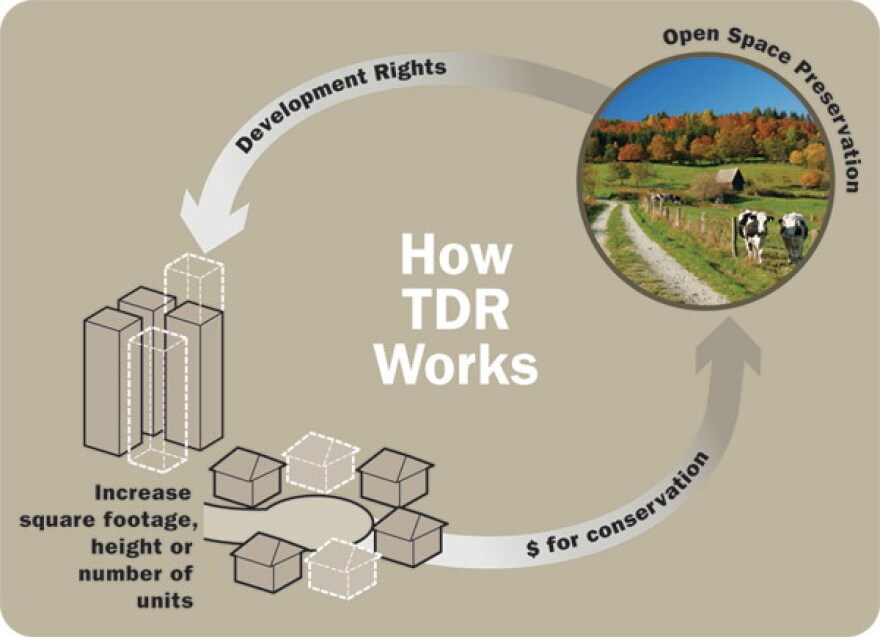Transferable development rights, or TDRs, are an old planning and zoning tool that could make their debut in eastern Summit County with the Cedar Crest Village in Hoytsville.
Cedar Crest is a proposed development for the one-street farming settlement just south of Coalville, the county seat.
It’s the vision of Hoytsville families for whom it’s become too difficult to earn a living farming and who don't just want the area to turn into a high-cost, resort-area subdivision.
The roughly 30 landowners and county planning staff envision a “cradle to grave community” for existing residents and their kids.
But like a lot of the east side, the area’s existing rural character and projected growth are in tension.
One of the ways to minimize the impact of development on rural character is to maintain the open space. And the way the landowners have chosen to do that is to use TDRs.
“By having this tool, it can help preserve that rural feel by having a natural, market-based, voluntary way to preserve land,” said David Cannon, the president of master planned communities at the Larry H. Miller Real Estate. Larry H. Miller and Ivory Homes are the companies tasked with making the village vision a reality.

Explaining TDRs
Here’s how it works.
The land owned by the 30 or so people who’ve chosen to join the village would all get rezoned for 4 units per acre.

Then, those units get sold into core areas where development is deemed appropriate, preserving meadows and farmland for open space, recreation or continued agriculture.
Land is only valuable—monetarily—because of its agricultural or development potential, said dairy farmer Mike Brown. He’s one of the landowners who was on the Cedar Crest subcommittee that selected TDRs as a tool.
So if the goal was to cluster development and keep other space open, there were bound to be winners and losers. Transferable development rights level the playing field.
“So it was an equitable way to still get value out of your dirt, even though you may not be having anything placed on that dirt,” Brown said.
TDRs wouldn't be needed if it was just one landowner trying to develop. They're for when density needs to be transferred between multiple owners, as is the case in Hoytsville.
It’s an idea that’s been around since the 1960s, Cannon said. State legislators updated land use laws about a decade ago to facilitate TDRs in Utah.
Cedar Crest is Summit County’s first effort at making them work locally. The hope is to prevent residential sprawl on the county’s east side.
Ongoing discussion
It may be unrealistic to think any one tool can totally prevent change.
Sue Follett, who lives on Creamery Lane, observed at January’s planning commission meeting that the Cedar Crest concept art might include tractors, but agriculture won’t be a big part of Hoytsville’s future.
“The three major landowners have sold their farmland to the village development,” Follett said. “I'm not so sure that we're going to see those types of vehicles on the road anymore.”
Change will happen slowly, though. Larry H. Miller and Ivory have said they'd phase the village in—not over years, but over decades.
And that’s only if it gets approved. The discussions happening at the Eastern Summit County Planning Commission will continue through May, and there’s still no final action planned at that point.
The Summit County Council will ultimately say whether the village development can begin.
February’s planning commission discussion is Thursday, Feb. 29, at 6 p.m. Click here for more.



